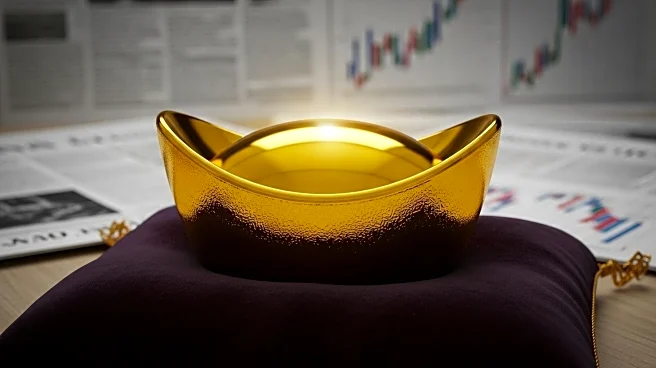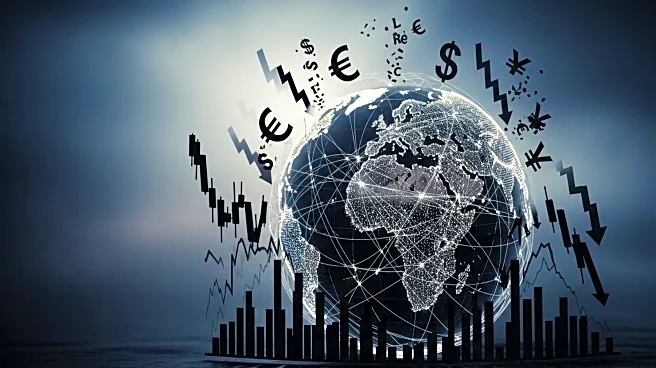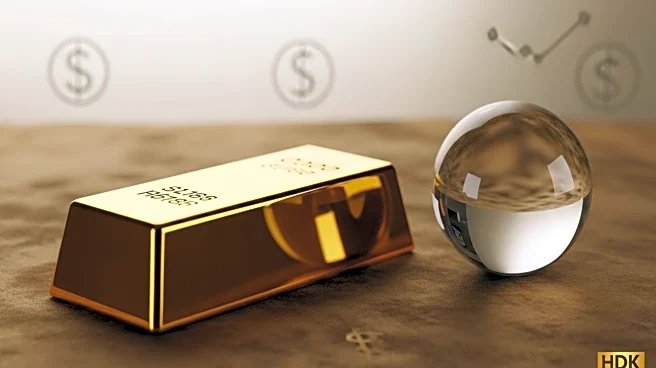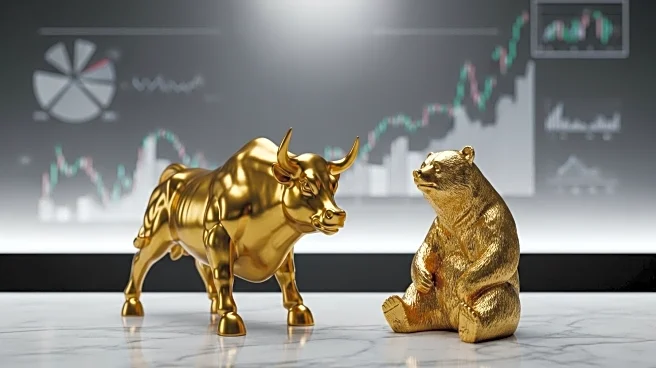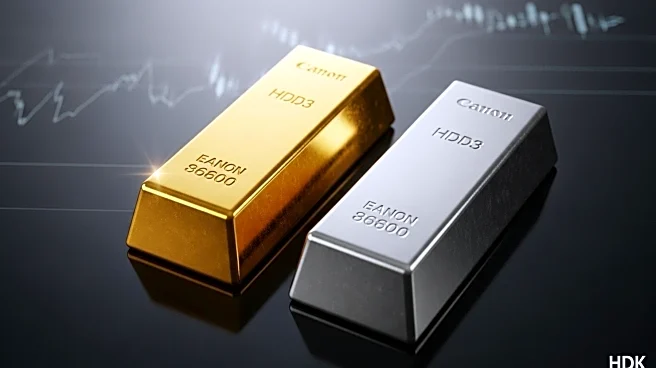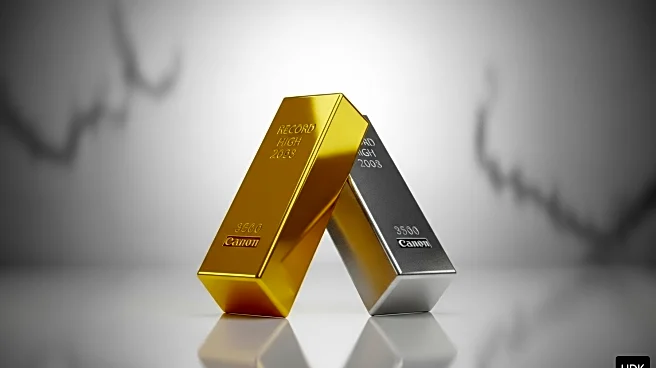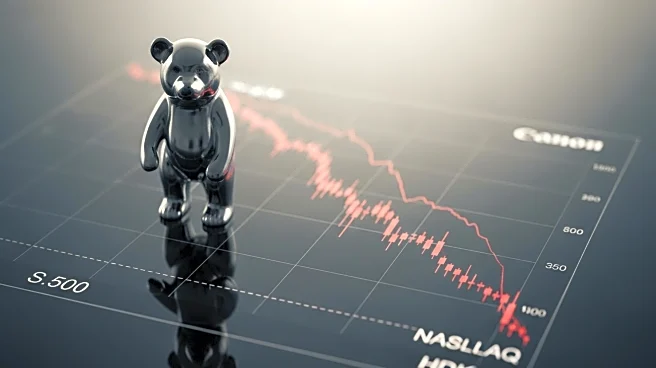What is the story about?
What's Happening?
Gold prices have reached near-record highs, trading close to $3,900 per ounce as of early October 2025. This surge is driven by safe-haven demand due to the U.S. government shutdown and geopolitical tensions, alongside market expectations of imminent Federal Reserve rate cuts. Silver and platinum have also seen significant price increases, with silver futures reaching a 14-year high and platinum experiencing multi-year highs due to strong demand in the auto and jewelry sectors. The U.S. government shutdown has delayed key economic data, adding to market uncertainty and bolstering demand for precious metals.
Why It's Important?
The rise in gold prices reflects broader economic and geopolitical uncertainties impacting investor sentiment. As the U.S. government shutdown creates data gaps, private indicators gain influence, increasing market volatility. The anticipation of Federal Reserve rate cuts further supports gold as a safe-haven asset. This trend indicates a shift in investor behavior towards precious metals amid fears of economic instability. Central banks and private investors are increasing their gold holdings, suggesting a long-term confidence in gold's value as a hedge against currency devaluation and inflation.
What's Next?
Market analysts predict continued bullish trends for gold, with forecasts suggesting prices could exceed $4,000 per ounce if current conditions persist. The Federal Reserve's policy decisions will be closely watched, as further rate cuts could sustain or amplify the current rally. Additionally, geopolitical developments and economic indicators will play crucial roles in shaping investor strategies. The mining industry may see increased activity and investment if precious metal prices remain high, potentially leading to new production initiatives.
Beyond the Headlines
The current surge in precious metal prices highlights the complex interplay between economic policy, geopolitical tensions, and investor behavior. As traditional financial markets face uncertainty, the role of gold and other metals as alternative investments becomes more pronounced. This trend may influence broader economic policies and investor strategies, potentially leading to shifts in global financial dynamics.
AI Generated Content
Do you find this article useful?
